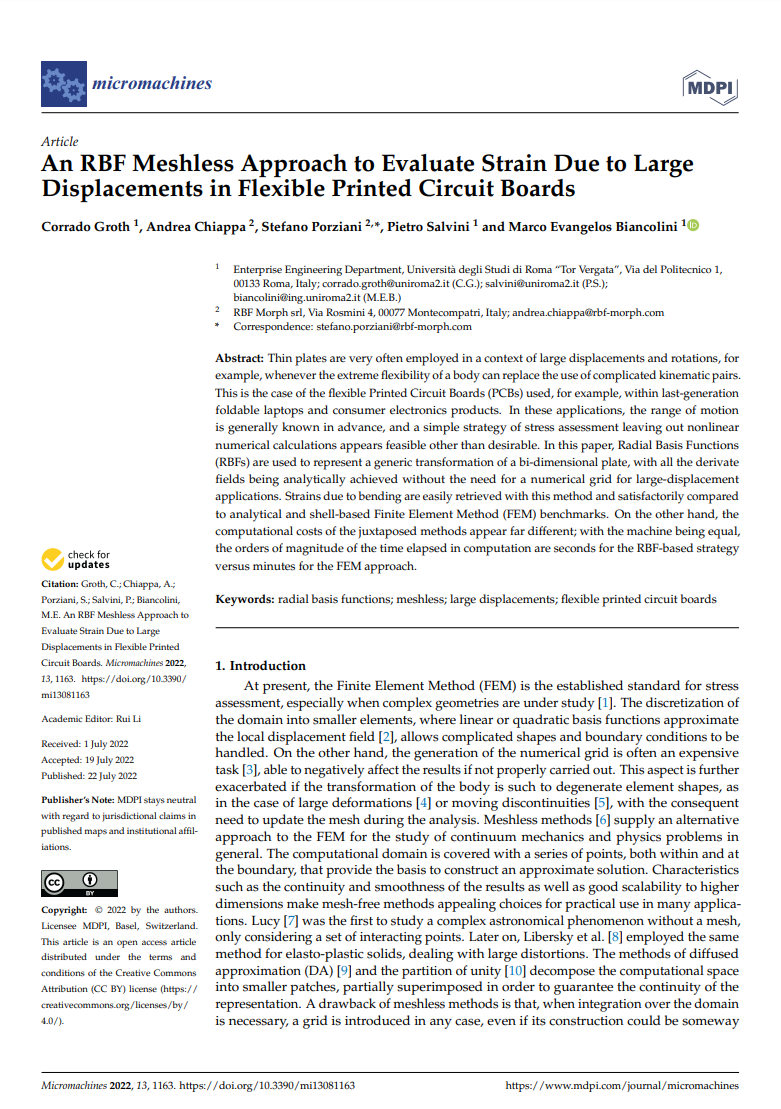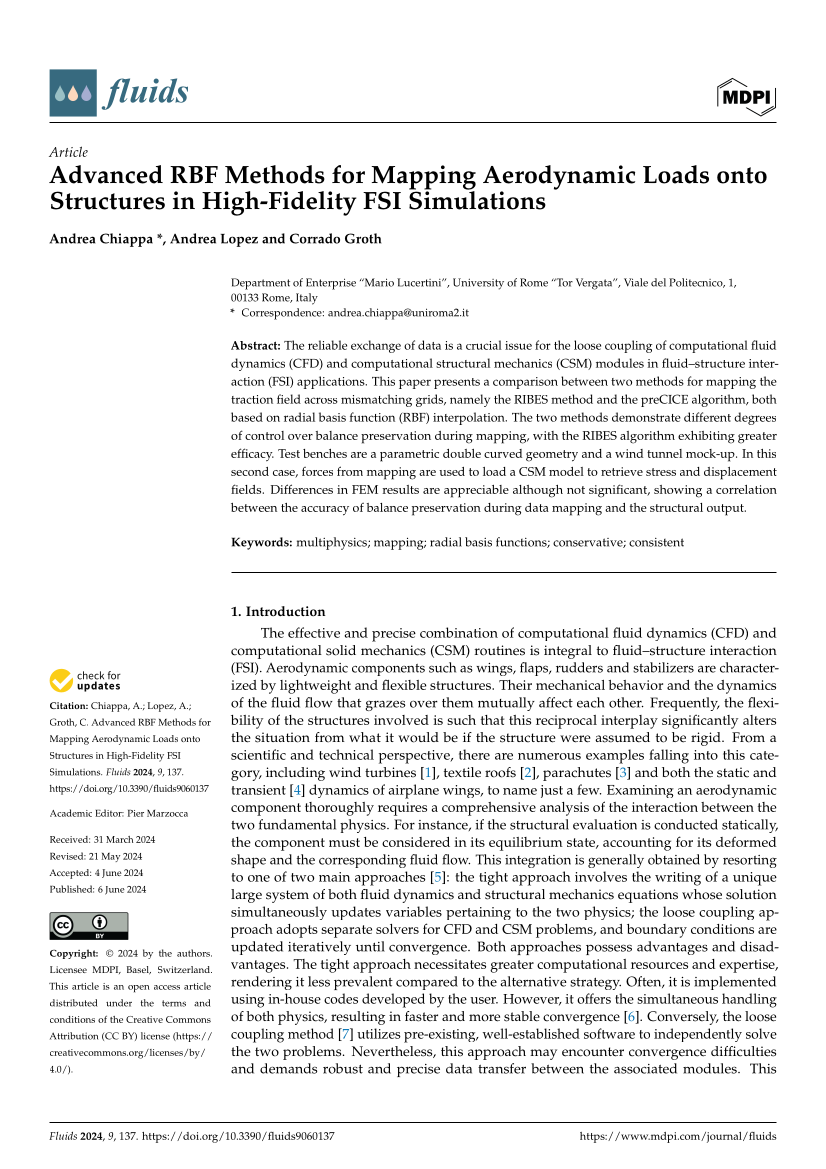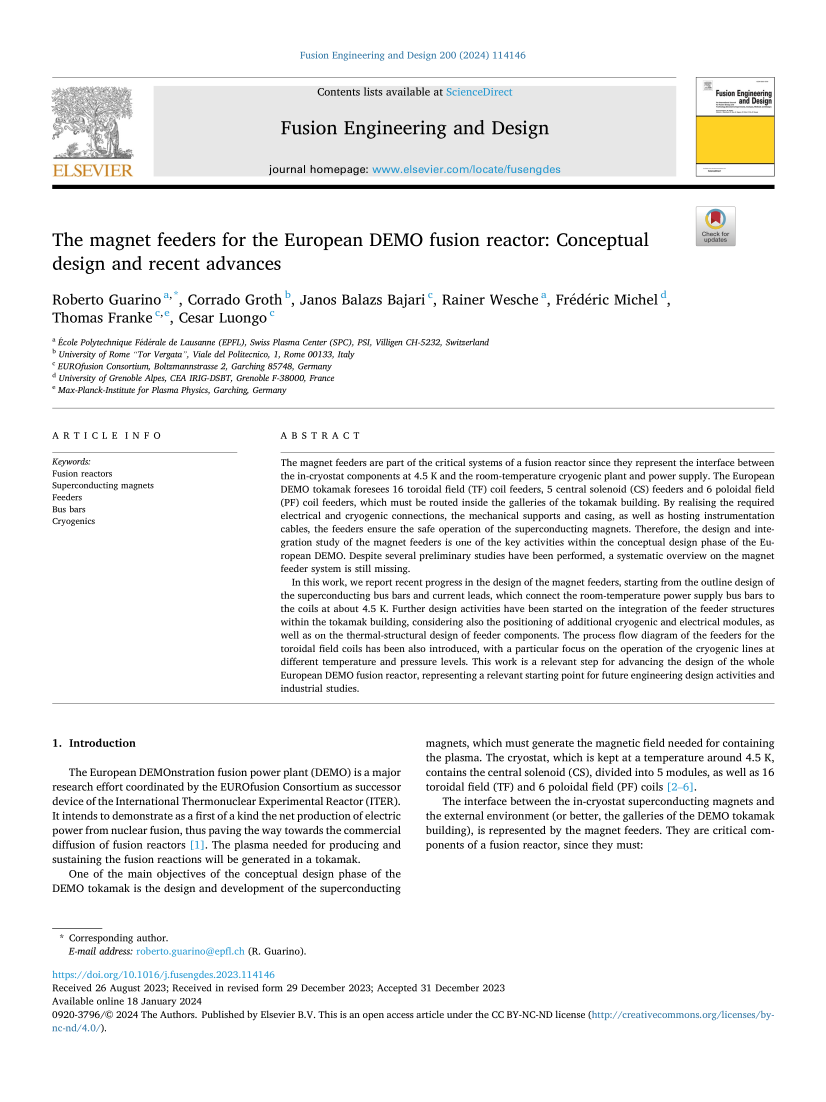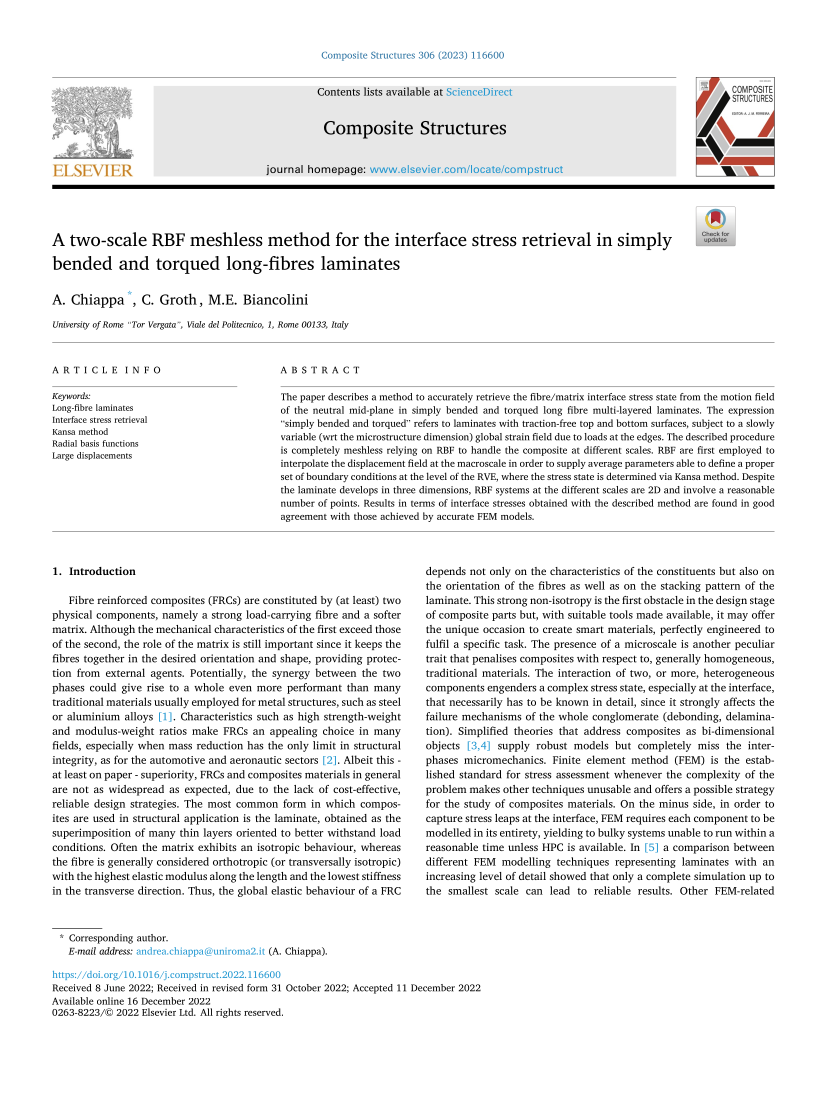New paper: An RBF Meshless Approach to Evaluate Strain Due to Large Displacements in Flexible Printed Circuit Boards

Our new work, focused on the meshless computation of strains for large displacements in flexible circuit boards, was published in Micromachines.
Groth, C.; Chiappa, A.; Porziani, S.; Salvini, P.; Biancolini, M.E. “An RBF Meshless Approach to Evaluate Strain Due to Large Displacements in Flexible Printed Circuit Boards”. Micromachines 2022, 13, 1163. https://doi.org/10.3390/ mi13081163
Abstract:
Thin plates are very often employed in a context of large displacements and rotations, for example, whenever the extreme flexibility of a body can replace the use of complicated kinematic pairs. This is the case of the flexible Printed Circuit Boards (PCBs) used, for example, within last-generation foldable laptops and consumer electronics products. In these applications, the range of motion is generally known in advance, and a simple strategy of stress assessment leaving out nonlinear numerical calculations appears feasible other than desirable. In this paper, Radial Basis Functions (RBFs) are used to represent a generic transformation of a bi-dimensional plate, with all the derivate fields being analytically achieved without the need for a numerical grid for large-displacement applications. Strains due to bending are easily retrieved with this method and satisfactorily compared to analytical and shell-based Finite Element Method (FEM) benchmarks. On the other hand, the computational costs of the juxtaposed methods appear far different; with the machine being equal, the orders of magnitude of the time elapsed in computation are seconds for the RBF-based strategy versus minutes for the FEM approach.
The paper can be downloaded or read at this link: https://doi.org/10.3390/mi13081163




Comments